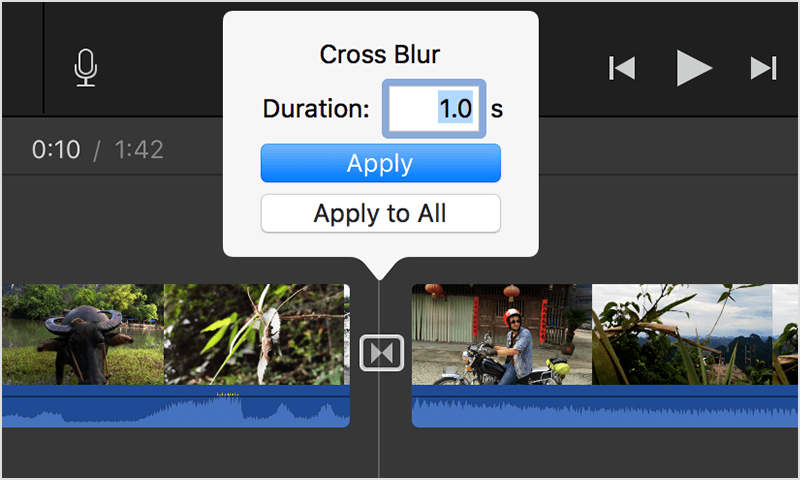

- #How to use imovie on mac duration of clip how to
- #How to use imovie on mac duration of clip movie
- #How to use imovie on mac duration of clip download
In the process of making a movie, quite often you’d find yourself needing to split a clip into multiple sections (e.g. Your changes remain adjustable until you click them off (you can still use the undo command though). When done, click somewhere else to save the cut. Select the clip on the timeline and simply drag its corner inwards If you want to reduce the duration of the clip you’ve just added because it’s too long for what you’re trying to do, you can easily cut it at either end: Select a file from your Libraries in the sidebarĭrag the entire file onto the project timeline One clip will then appear in a smaller frame within the larger clip. when you’re creating an iMovie tutorial). It goes without saying that to play and edit your movie, you first need to include video clips it will eventually consist of! You can also use the picture in picture iMovie feature that’s useful when you want two clips to play at the same time (e.g.
#How to use imovie on mac duration of clip movie
Then double-click on your movie project to get back in To get started with a blank timeline for a new project: So with all your iPhone video clips ready to go, let’s create your new movie. In iMovie, choose one of the libraries (Photos for media files in that app, All Events for files from your Mac, or All Projects for the past iMovie work)
#How to use imovie on mac duration of clip how to
How To Use iMovie On Macīefore you can start with the iMovie app, you need to make sure you actually have it on your Mac and know how to launch it:Ĭlick on the iMovie icon from your Dock or Applications folder (in case your don’t see the iMovie app there, search for it in the App Store and redownload) Plus, additional tips and tricks, which never hurt.
#How to use imovie on mac duration of clip download
(If you’ve applied an effect, the effect’s name will appear next to the Media File entry-“Brightness & Contrast 07.dv,” for example.) Armed with that name you can open the project’s Media folder, locate the unedited clip, drag it into a new iMovie project, and then edit it for your new project (begin or end it at a different point or apply a different kind of effect).So with your iMovie download in hand, go through this iMovie tutorial to learn how to use iMovie like a pro. In the Clip Info window, the Name field is likely to contain the name of the original clip-“Clip 08,” for example. If you use the more tedious method, you can track down not only the edited clip, but also the original. For example, if you’ve altered the brightness and contrast for the clip, that effect will appear in the clip you drag to the Desktop.

When using the easy-does-it drag method, you’ll create a clip that holds the edits and effects from the original project. Is there an advantage to the old-fashioned way? Possibly. In the resulting window, open the Media folder, locate the source file-that “Tipsy Uncle Bertie.dv” clip I mentioned earlier-and drag it into a new iMovie project. Now locate the project file for your movie, Control-Click on it, and select Show Package Contents from the contextual menu. If you’d rather do it the old-fashioned way, select a clip in an iMovie project, press Command-I to produce the Clip Info window, and make a note of the name that appears next to the Media File entry-“Tipsy Uncle Bertie.dv,” for example, if you’ve previously named the clip or, more likely, something more generic like “Clip 02.dv” if you haven’t bothered to name your clips.


 0 kommentar(er)
0 kommentar(er)
